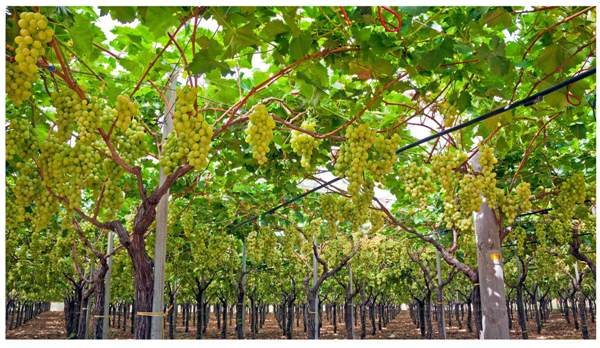Grape cultivation has been a popular practice for centuries, dating back to ancient times. Grapes are one of the world’s most widely grown fruit crops cultivated for various purposes, such as making wine, juice, jam, and raisins. Grapes are also a rich source of antioxidants and vitamins, making them a healthy snack. Additionally, talking about methods, in modern grape cultivation, farmers often use advanced machinery such as the Same Deutz Tractor to assist with tasks such as ploughing, tilling, and harvesting.
Table of Contents
Introduction to steps to Grape Cultivation
If you are considering grape cultivation, it is essential to understand the various stages involved in the process. This article contains a comprehensive guide to grape cultivation, including the steps involved, from planting to harvesting.
Step 1: Site Selection and Preparation
The first stage in growing grapes is to select an area that will work for planting carefully. It’s crucial to locate a spot with enough sunlight and excellent drainage because it requires a lot of sunlight and soil that drains well. A slope that faces south or southeast is ideal for grape cultivation because it offers the best solar exposure and airflow.
The next stage is to get the site ready for planting after it has been determined. This entails getting rid of any vegetation, debris, or other obstructions that might be there. Adding organic material, such as compost or manure, might require dense or compact soil to improve the structure and drainage.
Step 2: Grapevine Selection and Planting
The next step in grape cultivation is selecting the grapevine variety you want to grow. There are many types of grapes, including table, wine, and grapevine varieties. Each variety has unique characteristics and requirements, so selecting a combination well-suited to your specific growing conditions and intended use is important.
Once you have selected the grapevine variety, you must prepare the planting holes. Dig a wide hole twice as deep as the grapevine’s root ball. Place the grapevine in the hole, ensuring the top of the root ball is equally levelled with the soil surface. Backfill the void with soil, firming it around the grapevine to eliminate air pockets.
Step 3: Training and Pruning
To ensure proper growth and high-quality fruit production, one must train and prune the grapevine after planting it. One can train grape vines to grow along a trellis or support system, promoting optimal growth and fruit production.
Pruning is essential to grapevine management, as it helps control the grapevine’s size and shape, promote fruiting, and maintain overall plant health. Pruning should be finished in the dormant season when the grapevine is not actively growing.
Step 4: Step 4: Irrigation and Fertilization
Regular irrigation and fertilisation are essential for grapevines to grow healthily and produce fruit. It is important to guarantee grapevines receive adequate water by irrigating them regularly, especially during dry periods. To encourage ideal grapevine growth, fertilization should also be done regularly. It is important to use a fertilizer specifically formulated for grapes and follow the recommended application rates.
Step 5: Pest and Disease Management
Grapevines are susceptible to various pests and diseases impacting their growth and fruit production. Therefore, it is important to monitor the grapevines regularly for signs of any pests or diseases and to take appropriate measures to manage them.
Many different pest and disease management methods exist, including cultural, biological, and chemical processes. Therefore, selecting a management method appropriate for the specific pest or disease is important, and following all recommended safety precautions when using chemical methods is important.
Step 6: Harvesting and Post-Harvest Handling
The final step in grape cultivation is harvesting and post-harvest handling. Typically, harvesters pick grapes when they are fully ripe by determining their colour, sweetness, and overall taste.
After harvesting, one should handle grapes carefully to prevent damage to the fruit. One should sort and grade grapes according to quality and remove any damaged or inferior fruit.
Conclusion:
Grape cultivation is a rewarding and enjoyable practice that requires careful planning and management. By following these steps, you can ensure that your grapevines grow properly and produce high-quality fruit. One of the essential steps in grape cultivation is choosing the right equipment for your vineyard. Using a reliable and efficient tractor such as a Solis Tractor can help you with soil preparation, planting, and harvesting tasks, allowing you to manage your vineyard more effectively. With proper care and attention, your grapevines will provide you with delicious fruit for many years.












